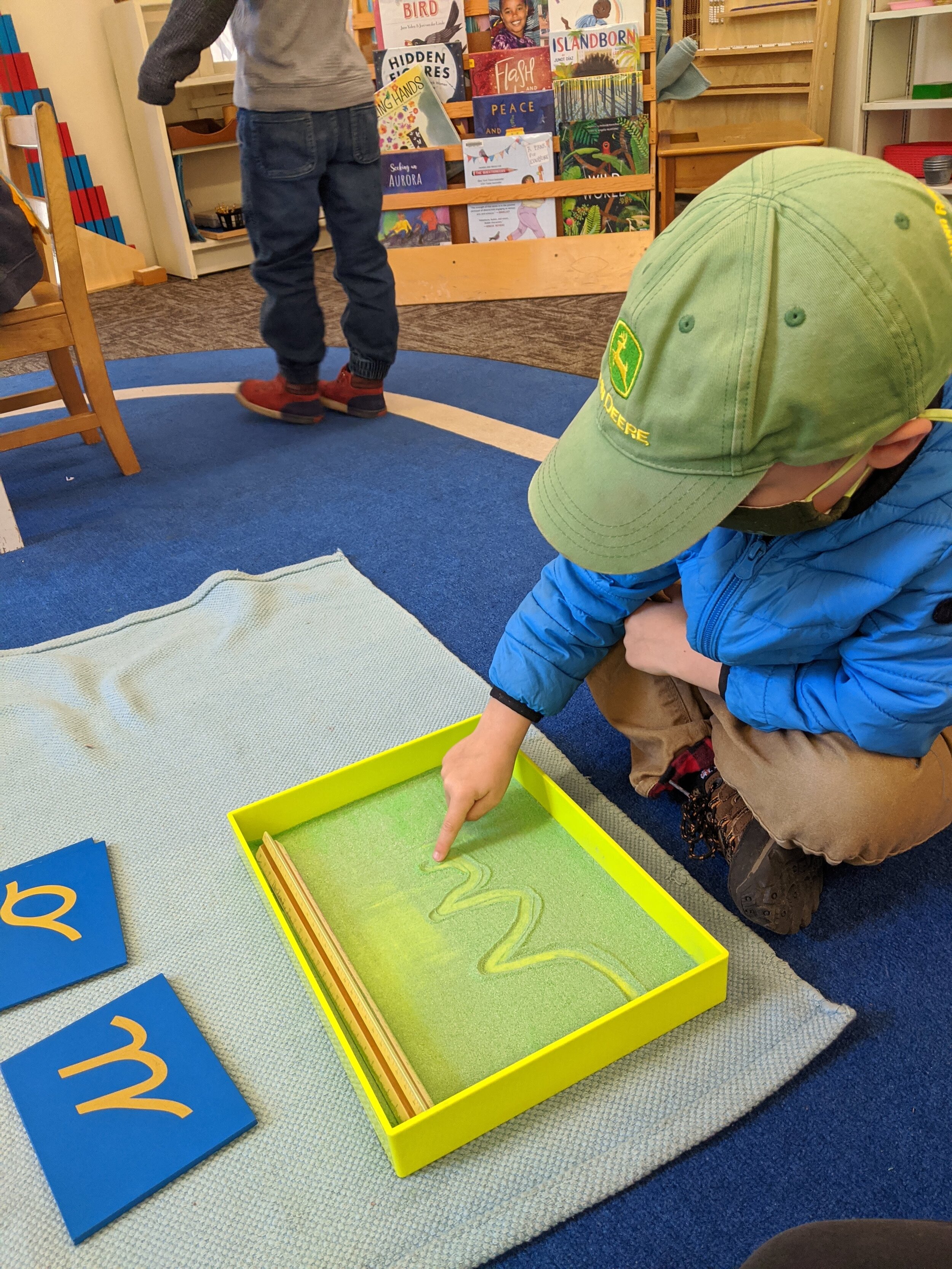The Case for Cursive
This blog was originally posted in 2013 on our old website! We think the content is still very relevant for us today at Mountain Sun and so wanted to re-publish it. Long live cursive!
In 2013, Ms. Brigid and I went to a Symposium in Multisensory Teaching and Learning at the Key Learning Center in Asheville. One of the workshops we attended there was on “Preparing Students for Success in Writing and Learning.” The presenter was Joy Moss, an occupational therapist. In her session, we learned many practical ways to identify and remediate students who may have dysgraphia or challenges with handwriting.
After the training, I started thinking about the question about handwriting that I get asked the most by students, and sometimes parents:
“Why do we have to learn cursive?”
It's a difficult question to answer when we live in a time when students are technologically savvy and cursive is seen as a dying art form, not to mention that most public schools no longer require teachers to give direct cursive instruction. However, in my Montessori training, we were inundated with the mantra:
“We read in print, we write in cursive.”
We continue to have our students practice cursive handwriting. Research has shown that handwriting instruction and practice is directly related to literacy development. Here are some of the main points that I found applicable while researching the benefits of learning to write in cursive:
Cursive improves the continuity and fluidity of thought in written communication.
Cursive teaches words as a cohesive unit.
Cursive reinforces the beginning and ending of words, with proper spacing of letters.
By joining letters, cursive writing reinforces the blending of sounds within words.
Cursive offers the kind of motor-learning work that stimulates the brain to build pathways for better reading and writing.
Having good, legible penmanship increases a student's self-confidence about his/her work.
We tell the students that there is no such thing as perfect handwriting. It's like their fingerprint: one-of-a-kind. Their signature is unique to them. Their penmanship conveys a sense of who they are in the form of written communication that typing just can't do in the same way. Whether they leave fluently writing in cursive, or just getting some exposure, our hope is that they have an appreciation for a style of writing that has transcended centuries.
The Case for Cursive
Points to consider about keeping cursive in the classroom:
1. Cursive writing is a more natural way of writing. The pencil flows along the paper without frequent stops within words.
2. Words written in cursive are clearly separated from each other. Run-on words are not as common in cursive.
3. The child who can read cursive can also read manuscript, but the reverse is not true.
4. Cursive is a better exercise for strengthening fine motor skills. The connecting letters help the child to produce smooth, rather than choppy, strokes with the pencil.
THE ADVANTAGES OF TEACHING CURSIVE FIRST INCLUDE:
It is easier for the young child to learn!
Does not have to be ‘unlearned’ at a later time.
Cursive writing involves a flowing, uninterrupted movement which reinforces the left to right directionality of our written language.
Teaches words as a cohesive unit.
Cursive or connected writing allows for the continuous flow of thought and thinking ahead while writing.
Cursive reinforces the beginning and ending of words, with proper spacing of letters.
Since all lower case letters start from the same beginning point, the confusion resulting in reversals or inversions is eliminated.
By joining letters, cursive writing reinforces the blending of sounds within words.
Research indicates that the challenge offered by the motor learning activities actually helps the brain learn how to get its various structures to work together more efficiently as it processes symbolic language. Cursive offers the kind of motor-learning activity that stimulates the brain to build pathways for better reading, writing and yes, later on, keyboarding.
THE DISADVANTAGES OF TEACHING CURSIVE LATER:
Studies show that the transition to cursive in the 3rd grade causes writing speed and legibility to revert to 1st grade levels.
Students resent having to learn another method
Studies show that most who are taught manuscript first revert back to manuscript or a blend after 3rd grade.
Students often fail to complete the transition process to cursive and this affects the ability to read cursive.
Printing causes segmentation which makes the muscles stiffen up rather than letting a nice flowing rhythm develop.
Few things help enhance a student’s academic self-respect more than the development of good penmanship. A well-rounded child should learn to use cursive and computers. It is hard for children to read cursive if they do not know how it is written. Is there anyone who doesn’t appreciate distinctive, legible handwriting?
1. Cursive improves the continuity and fluidity of thought in written communication. Connecting letters increases the speed of writing. Increased speed improves attention span and the ability to excel academically. The connectivity of letters is pleasing to children. They feel the flow of the letters and they sense the delight of the movement.
2. Cursive improves neural connections in the brain. Cursive improves the dynamic interplay of the left and right hemispheres of the brain. The physiological benefits of the release and control (up and down) movements of cursive help build pathways in the brain while improving mental effectiveness.
3. Cursive graphically illustrates the development of fine motor skills. Handwriting is a frozen manifestation of the complex development of the brain. Few outward expressions convey a well-educated individual better than the ability to communicate thoughts and ideas effectively through the written word. Nice penmanship is like a business suit for your letter, it makes a good impression. Cursive is more individualistic and expressive than printing; it’s an art in itself.





